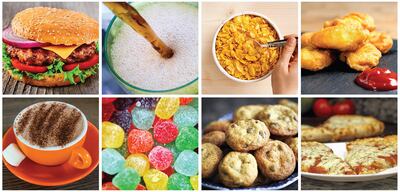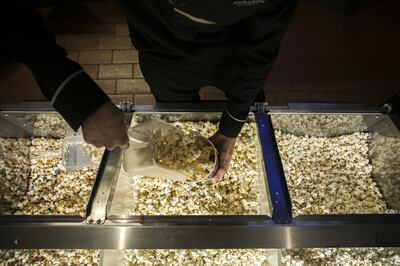The adverts, for once, are spot on. When it comes to some snacks, it’s hard to deny “once you pop, you can’t stop”.
No matter how much you want to resist, one taste and you’re doomed to eat more.
We tend to call such food moreish or yummy. Naturally, scientists have a more esoteric term: high “palatability”.
And it’s known that some foods are especially likely to bring us back for more. Unsurprisingly, the food industry has spent billions creating such “hyper-palatable food” (HPF) because it means greater sales.
But there’s a dark side to HPF: its ability to undermine so-called satiety – the biochemical response that tells us to stop. And that opens the way to binge eating, obesity and premature death.
Research suggests the effect is triggered by certain combinations of fat, carbs, sugar and sodium – principally in the form of salt.
But until now it’s not been clear precisely what those combinations are, and how to tell if a food may be irresistibly hyper-palatable.
Doing so could play a key role in research to combat obesity – including in the UAE, where it affects more than 1 in 4 of the population.
And it could also help consumers through more precise labelling. Alongside standard information about fat, sugar, salt and calorie content, some food could be identified as especially unhealthy because of its ability to trigger binge eating.
Now a team of researchers believes they have solved the mystery of moreishness.

Professor Tera Fazzino and colleagues at the University of Kansas made their discovery by combing the research literature to identify foods found to be potentially hyper-palatable in tests, and noting their nutritional content.
They then looked for combinations of fat, carbs, sugar and sodium that seemed to occur unusually often in such foods – suggesting they were boosting the palatability more than expected by any one ingredient alone.
The team found that three specific combinations emerged repeatedly.
The first of these “HPF clusters” are foods with a mix of fat and sodium (FSOD), where the fat provides at least 25 per cent of the total calories, and 0.3 per cent sodium by weight.
Everyday examples of such FSOD foods are cookies and butter popcorn – both famously irresistible.
The second cluster identified is a combination where carbs providing at least 40 per cent of the total calories, plus 0.2 per cent sodium by weight. This CSOD [carbs and sodium] category contains the likes of pizzas, pasta and salty snacks.
Finally, the researchers identified a mix of fat and sugar, where each provide at least 20 per cent of the total calories. This FS category contains notorious diet-busters like cakes, pies and sweet cereals.
The researchers have gone beyond simply identifying this “evil triplet” however. They decided to see just how much of the US diet is hyper-palatable by comparing the various proportions of fat, carbs, sugar and sodium to those for foods registered in the official US Department of Agriculture database.
Astonishingly, they found that 62 per cent of them were hyper-palatable, falling within one or more of the HPF clusters.
The most prevalent were foods in the FSOD category, reflecting the widespread use of meat, eggs and dairy produce. Next came FS, followed by CSOD carbs-and-sodium rich food.
In other words, almost two out of three of the food products found on supermarket shelves aren’t just providing nutrition. They also have the ability to make people over-indulge.
On the face of it, the answer is simple: switch to healthy options with reduced or zero fat, sugar, salt or calories.
Shockingly, the researchers found that almost half of foods registered in this category fell into at least one of the three high palatability clusters. No wonder dieters so often end up bingeing on so-called “healthy options” and failing to lose weight.
Reporting their findings in the current issue of the journal Obesity, the researchers found some ways of dodging the HPF trap lurking in so many food products.
They found that simple, natural food – plain meat, fish, fresh fruit and virtually all raw vegetables – avoided all the HPF categories.

This is in line with research suggesting that heavily processed foods are key drivers of the obesity epidemic.
As The National reported last year, researchers at the University of Sao Paulo, Brazil have devised the so-called NOVA system that puts all foods into four categories – including "ultra-processed".
Comparing obesity rates in 19 European countries with food intake, the team found a positive correlation between intake of ultra-processed food and obesity prevalence.
Portugal, where just 10 per cent of calories come from such food, emerged with the lowest rate. In contrast, the UK – where over 50 per cent of calories come from such food - came out worst.
The new University of Kansas study confirms some other suspicions about good and bad food choices.
Around 9 in 10 forms of fried or fast foods proved to be HPF, along with desserts. In short, not only are they unhealthy, they’re also likely to trigger over-eating.
No surprise there, perhaps – but there is some good news as well. The team identified some foods where just swapping one form to another makes them less likely to trigger bingeing. For example, while salted nuts fall into the FSOD category of HPF, unsalted nuts are relatively safe.
Switching from highly processed cereal to simple oatmeal is another good choice, as the latter contains fibre which actually promotes satiety rather than undermines it.
Prof Fazzino and her colleagues now plan to check the diets of some Mediterranean countries for prevalence of HPF. This may well reveal those diets to be both healthier and less likely to cause bingeing.
But one thing is already clear: much of what’s on supermarket shelves is too well described by that old cereal advert: “The trouble is, they taste too good”.
Robert Matthews is Visiting Professor of Science at Aston University, Birmingham, UK







